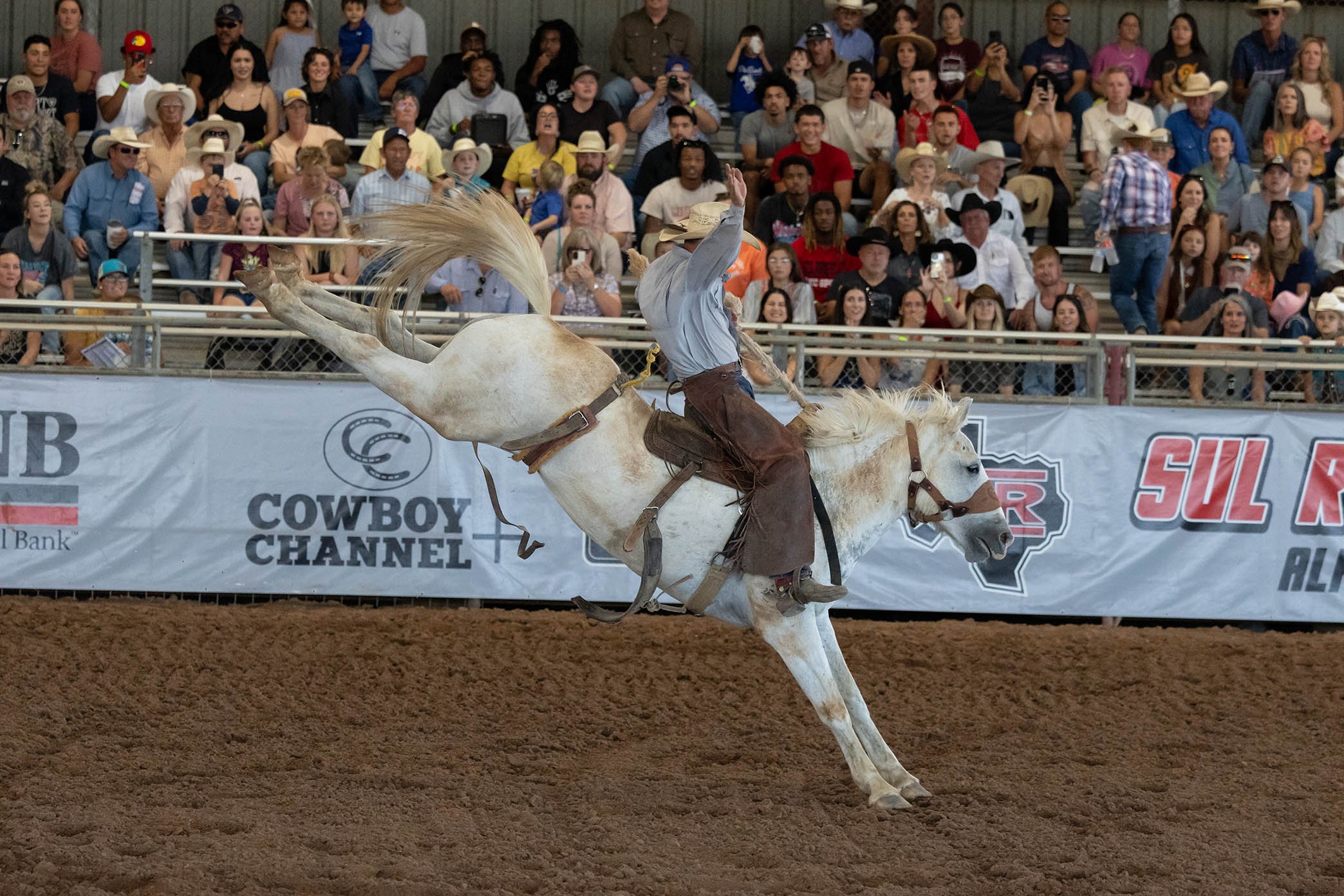
What is a Ranch Rodeo?
Ranch Rodeo cowboys make their living everyday working as cattle producers, be it in the Big Bend of Texas, the Mountains of Oregon, the Flint Hills of Kansas, or the Rocky Mountains of Colorado.
We feel there is nothing better than “riding for the brand” (the ranch one is employed by). The working ranch cowboy is a very loyal, gritty individual, with the survival skills to adjust to the extreme hazards that come with the occupation.
The working ranch cowboy’s everyday life isn’t measured in seconds or standings, it is measured in horsemanship, stewardship and heritage.
A pro rodeo cowboy may have grown up on a ranch or might even live on one now---but he makes his living rodeoing, not ranching.
In 1995, a group of people from across the western United States created the Working Ranch Cowboys Association. It exists to celebrate and preserve the working ranch cowboy lifestyle and the WRCA sanctioned rodeos exist to give these cowboys a forum to show off their skills. The champions of each sanctioned rodeo earn an automatic bid to the WRCA produced World Champion Ranch Rodeo that is a means to showcase the skills of the working ranch cowboy and to raise funds for the WRCA Foundation.
Ranch Rodeo Events
These events showcase the skills used by working cowboys every day.
Ranch Bronc Riding
“Ride as ride can” for 8 seconds. One member from each team will be required to ride a bucking horse in a working ranch saddle and one-rein halter (no PRCA rigging allowed).
Points will be awarded for the difficulty of the horse and also for the degree of aggressiveness, control and exposure demonstrated by the rider.
Team Sorting
Four men from each team have two minutes to sort out three head of cattle from a herd. These cattle must be sorted in numerical order based on a starting number called out by the announcer as the team approaches the starting line. The time begins when the first rider crosses the start line. Example: If 4 is called, cattle to be sorted will be 4,5,6.
Sorted cattle must be held across the line. Any wrong numbered cattle across the line will result in a NO TIME.
Team Doctoring
Four horseback members from each team must separate one numbered animal from a large herd, rope it, and place a non-toxic paint mark between the animal’s eyes in less than two minutes. As riders approach the line, the announcer will call a number that has been drawn for them. Time begins when the first rider crosses the line. Without loping into the herd, a numbered yearling must be cut out from the herd and driven across the start line, before it can be roped. The yearling will be roped by its head and hind feet, laid on its side, and a mark will be place on it’s head to symbolize that is has been “doctored”.
Team Branding
Up to six members, including a roper, two flankers, a brander and two herd holders, from each team can compete here. Two teams will compete at the same time and they each have two minutes to rope, throw and mark with flour, two calves each. The ropers will start together. Time begins when they cross the line.
The flankers may not touch the calf until the whole calf has been brought across the line. After the calf is flat on its side and the rope removed, the branding iron is removed from the bucket, the calf branded on its ribs on either side, and the iron returned to the bucket after branding each calf. The brander may help flankers remove the rope, however the iron must stay in the bucket until the rope is removed.
Time stops when branding iron is in the bucket after the second calf. After a calf has been branded, he must return to the herd before he can be roped again. If 2 calves are roped and dragged to the fire, one of them must be released and allowed to return to the herd. The winner is the fastest time on two calves.
Wild Cow Milking
Two teams compete at a time in this event. Four members from each team, including a roper (who is horseback), milker and two (2) muggers, will be required to rope a cow and milk her in less than two minutes.
The muggers hold the cow with help from the roper, while the milker milks her into a standard 12oz longneck bottle. The cow must be standing to be milked. Any one of the contestants may milk the cow.
The runner must hand the bottle to the judge and if no milk comes out, or if the contestant turns the bottle upside down, the team will receive a NO-TIME. The judge will turn the bottle upside down and allow 10 second for milk to leave the bottle. The team with the fastest time wins.
Youth Ranch Rodeo Events
Youth teams also compete in Team Sorting, Team Doctoring, and Team Branding. Instead of Wild Cow Milking and Ranch Bronc riding they compete in the following events:
Wild Steer Race
A steer is put in a bucking chute with a rope on it. The team will have to hold on to the rope when the steer is released and will attempt to get a team member on to the animal’s back. The rider must get on before the starting line and must remain on the animal until it crosses the finish line.
Trailer Loading
Teams have two minutes to sort one of their numbered cattle out of the heard and load it into a trailer. The cow can not return to the heard once it is sorted out. One horse must be loaded into the trailer with the cow and all team members must be on the truck bed before time is stopped.






